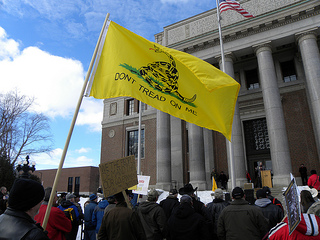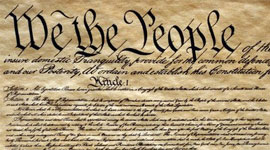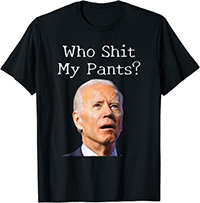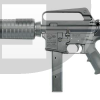Understanding the Second Amendment
Article Posted: April 17, 2013

Author: Carleton P. Edmunds, J.D.
The current push for stricter gun laws and regulations has sparked a fire storm of debate that ultimately hinges on the rights afforded to us under the Second Amendment. Understanding the issues is difficult for those on both sides of this debate since there is very little in the way of interpretation from the courts. When I studied Constitutional Law back in the 1980s, the Second Amendment was barely even mentioned. I couldn't even find a reference in the case book we used. Even today, there are few decisions from which we can draw a better understanding of this important right.
In light of persistent demands for greater gun control, there are essentially three different questions folks are trying to answer:
- 1.) Who has the rights afforded by the second amendment?
- 2.) What do those rights protect?
- 3.) What constitutes "infringement"?
Historical setting of Second Amendment:
First, a bit of background. The framers of the Bill of Rights had just emerged from a hard-fought Revolution to free us from an oppressive and tyrannical government. Paramount to securing the future of this 'freedom' was the idea of securing the rights for an armed militia that could defend our early Republic.
The amendment itself is one of the shortest; "A well-regulated militia being necessary to the security of a free state, the right of the people to keep and bear Arms, shall not be infringed."
To the drafters, their use of the term "militia" included any able-bodied [male] individual who owned property. By today's standards, this effectively means the citizens of each state. The idea of "a well regulated" militia infers a military unit such as our modern National Guard.
Individual, State or Collective Rights?
 A literal reading of the amendment suggests that two sets of rights were created. First is the right of the States to have their own militias - known as the National Guard. Second are the people's right to keep and bear arms. The early courts believed these two rights were inter-twined. For the individual states to lawfully maintain militias under the federal government, the citizens of the individual states needed to have a more basic right under the Constitution to keep and bear arms. As state's rights were ascertained, much of the early case law dealt with defining who the "people' were, in efforts to distinguish between states' rights and the individual rights generally conferred by other amendments in the Bill of Rights.
A literal reading of the amendment suggests that two sets of rights were created. First is the right of the States to have their own militias - known as the National Guard. Second are the people's right to keep and bear arms. The early courts believed these two rights were inter-twined. For the individual states to lawfully maintain militias under the federal government, the citizens of the individual states needed to have a more basic right under the Constitution to keep and bear arms. As state's rights were ascertained, much of the early case law dealt with defining who the "people' were, in efforts to distinguish between states' rights and the individual rights generally conferred by other amendments in the Bill of Rights.
Until recent years the courts considered these as "collective rights" that were only provided to the states for their protection. Any individual rights that were granted were therefore 'predicated' on the rights of the states to have their own militias . In other words, the two rights supported each other. Under the Federal Constitution, the states could only have a militia if its citizens could lawfully keep and bear arms, but a private citizen's rights were subject to the State's right to maintain its own militia. Advocates for greater gun control want to take this a step further, suggesting that since the need for a 'militia' no longer exists because of its replacement by the National Guard - there is no further need to protect the rights of individual citizens.
The court's first look at the amendment in recent times was US v. Miller in 1938 (Miller) following enactment of the National Firearms Act in 1934. The Act sought to crack down on the use and sale of machine guns and sawed off shotguns associated with the gangster style shootings typical of the late 20s and early 30s. Miller was arrested because he had an 'illegal' shotgun in his possession and had not paid the special tax needed to own such a weapon. The Supreme Court upheld the taxing provisions of the Act, citing that the intent was to raise revenues - not because it interfered with the Second Amendment.
One of the arguments used by the court was that the sawed-off shotgun he possessed was not a 'protected' weapon under the second amendment because it "was commonly used by the military and therefore should not be in the hands of the public." The court's rationalization appears flawed since fully-automatic weapons which commonly used by the military were also a major focus of the Act. It should be noted however that the court acted on its own and did not hear any arguments on behalf of Miller - the Act's application to fully-automatic weapons therefore was not an issue and was not reviewed.
Individual Rights are provided
The issue of individual rights was not addressed until 2004 in US v. Emerson (Emerson). Emerson lawfully owned a 9mm handgun but continued possession after an Order of Protection was issued by the court during a divorce proceeding. Under state law, continued possession of the gun was illegal and Emerson claimed that the law was unconstitutional under the Second Amendment.
In hearing the case, the Fifth Circuit ruled against Emerson, but concluded based on its review that the plain meaning of "the right of the people to keep arms"is that the right is 'individual' rather than "collective"and is not limited to keeping arms while engaged in active military service or as a member of a select militia such as the National Guard. The court added "..that the Second Amendment, like other parts of the Bill of Rights, applies to and protects individual Americans." These individual rights were recognized for traditionally lawful purposes including home defense. On appeal, the U.S. Supreme Court decided not to review this case, therefore affirming the Fifth Circuit's decision.
Probably the most important case so far is District of Columbia v Heller (Heller). This action stemmed from an action by the District of Columbia making it illegal to carry an unregistered firearm, while at the same time prohibiting the registration of handguns. The law also required home owners to keep lawfully-owned firearms unloaded and locked, or disassembled. Heller argued that the laws were unconstitutional as to the Second Amendment rights as defined in Emerson that allow possession and use of firearms for traditionally lawful purpose. Here, the court held that the handgun ban and trigger-lock requirement violated the Second Amendment. A similar action was heard in 2010, McDonald v. Chicago which applied the Second Amendment rights to state actions.
The recent court decisions firmly establish that the Second Amendment confers individual rights for us to "keep and bear arms". The court however, qualified this position in Heller stating that these rights "are not unlimited"and that actions to keep guns out of the hand of criminals and those with mental illness are well within the limits of responsible gun control.
The Bounds of Infringement
The final question for us is what constitutes infringement? This may be borne out over the next few years as the current administration escalates efforts to add new laws that will ultimately impact lawful gun owners. From here, we can only speculate as to what direction the courts will take, and why. For a starting point, we can look at the two extremes that have already been decided.
The National Firearms Act, which outlawed machine guns and shortened shotguns, was upheld by the Court because it was viewed as a money-making scheme and not gun control. The court interestingly reviewed this case without any arguments from Miller and rationalized that if Miller had paid the special 'tax', possession of the shotgun would otherwise have been legally-permitted. The Emerson court not only concluded that the Second Amendment provided individual rights to keep and bear arms, but struck down the District of Columbia laws preventing lawful registration and use of handguns, finding them to be unconstitutional infringement.
The Heller court clearly tells us what permissible - keeping guns out of the hands of criminals and away from those who suffer from mental illness. Perhaps our approach to gun control should follow the wisdom of the Court.
Commentary
A question that has not been answered is what guns, if any, are protected under the Second Amendment. Under Miller, the court concluded that the sawed-off shotgun in Miller's possession was not commonly used by the military therefore it was not a protected weapon under the Second Amendment. Does that infer that firearms used by the military are protected? Since the court did not hear any opposing arguments in making its decision, it chose not to address the application of the Act to fully-automatic weapons - which are commonly used by the military. The question of whether the Second Amendment acts to protect individual rights with respect to certain types of firearms therefore was not resolved and is a critical question in light of our current debate on gun control.
Arguably, AR-style weapons and standard 30rd capacity magazines are used by the military and therefore may be 'protected' under the Second Amendment if Miller is understood correctly. If we look at the 'plain language' of the Amendment, there is a clear nexus between the military and individual rights. Here, we can consider two parallel lines of thought. The Second Amendment does not distinguish between military weapons and those available to the public. There have been many times in the past when arms available to private citizens were far superior to those available to the military. What is protected is the premise that we can maintain an 'armed citizenry' that can protect the land we live on. This was actually a factor the Japanese considered when they had an opportunity to strike our mainland during World War II. They decided against it! Consider also that no foreign nation has ever tried to invade us by force.
Until passage of the National Firearms Act of 1934, there has never been a restriction on the kinds of guns people could own or use. For example, when the Second Amendment was passed, our military was only equipped with smooth-bore muskets which were highly inaccurate and inferior compared to the Kentucky and Tennessee Rifles that were in the hands of early settlers. These 'rifles' were much more accurate, had a longer range and packed a more serious punch because of their higher-velocity capabilities. At the Little Big Horn, our military, equipped with single-shot Trapdoor rifles, were out-gunned by Indians using repeating rifles that could fire two rounds a second. In the violence that prompted the National Firearms Act of 1934, mobsters had access to fully-automatic weapons that were much superior to the small arms maintained by our Police forces.
By contrast, today's military weapons such as AR's rely heavily on NATO-approved ammunition purposely designed to minimize collateral damage when used. The point is that in the past, there have been no restrictions on the kinds of guns that private citizens can own. This is understandable when one understands that innovation and technology are more profitable when they are applied at the commercial level. Interestingly, access to this commercially-applied technology has done much to improve the capabilities of local Police units, placing them on par, or better than what is available to the military.
The other line of thought is that all firearms, whether they are designed for military or civilian use can be used for lawful purposes, including fully-automatic weapons. The operative term supplied by the courts here is "lawful". Think about this fundamental requirement! In practice this is really a broad right since there are only a very few exceptions where keeping or bearing a gun would be unlawful. Hunting, possessing, displaying, shooting, competing, training, carrying, concealing, storing, buying, selling, or otherwise owning a firearm are all potentially-lawful activities.
Here is where the hard part begins. How do we preserve the rights of lawful citizens who want to use their guns for lawful purposes and keep guns (of any type) out of the hands of criminals, drug users, and those who are mentally ill or otherwise un-fit to own or possess a firearm.
Background checks have to be a good idea, but only if they are effective. Unfortunately, this implies that Big Brother needs to keep some kind of data base that tracks criminal records, arrest warrants, orders of protection, etc that would reasonably prohibit someone from possessing a firearm.
Concluding thoughts
Passive actions such as banning certain kinds of guns, reducing the number of rounds that can be fired or limiting the capacity of magazines, restricting sales, making guns inoperative, or requiring waiting periods are examples of actions that sound good, have been found not to work, and potentially infringe on our Second Amendment rights. Here I have to question the ultimate goal of many gun control activists. Is it a need to reduce gun-violence or is the purpose an outright effort to ban guns - which carries serious political overtones that reach to the world stage.
Let's assume it's about violence. My question then is what has changed in our culture over the last 45 years? This places us in the late 60s when I was in high school. Nearly every pickup truck in the parking lot was unlocked, windows would be rolled down on a warm day, and one or two rifles or shotguns would be racked in the rear window. No one even thought about taking a gun into the school or using one to kill someone despite the social tension that we faced during those years. School officials did collect a few gravity knives, a switch blade or two and various smoking aids throughout the school year - but the violence wasn't there.
So what is different now? What has changed?
Liked this? Try these too..
- Why the Gun Debate Will Never Change
- Choose Your Crime Own Stats
- After You Dial 911 : Dont Be A Victum
- Does Gun Control Work?
- Proper Self Defense Rifle Ammo
- 5 Best Home Defense Shotguns
- Top 5 Home Defense Handguns
Gun rally photo from fibonacciblue
Related Articles
Please like, share, favorite, bookmark, and comment. Thank You.
Main Menu
Original Articles
- New 25+1 Capacity Shotgun!
- Hudson H9 American Made 9mm
- How To Build A Mud Hut
- Pistol Looks Like Cell Phone
- 45 ACP vs 9mm Luger
- Best 9mm Carbines
- Mall Ninja Xtreme Zombie Carbine!
- 5 Alternative Range Bags for Pistols
- Best 45 ACP Carbines
- 5 Dirt Cheap Guns $170 to $260
- Muslim Free Shooting Range?
- How To Clean A Rifle
- 3 Good 300 AAC Blackout Reviews
- Top 5 Guns for Women
- How to Really Shoot A Pistol
- Worlds Best 9mm Handgun
- 5 Great Gun Safes (Options)
- 9mm vs 40 S&W Summary + Ballistics
- Red Oak, White, or Chestnut for Deer Herd?
- Bullets for Barter Post Collapse
- Funny Pro Gun Sayings
- 5 Strange Handguns You Don't Need
- 3 Great .22LR / 410 Survival Rifles
- American Rifles | The Original ARs
- 600 Round Glock Magazine
- 10mm vs 40 Summary and Ballistics
- How Important is "Shot Placement"?
- 10 Item First Aid Kit Checklist
- 10 Gun Lights for Home Defense
- How to Make a Stove Hobo Style!
- Most Basic Survival Food List Ever
- Best Handguns for Women
- Make Homemade Mosquito Trap
- Lets make a Sawed-Off Shotgun!
- Man Brings Knife to Gun Fight (Funny)
- Gun Store Etiquette (Proper vs Improper)
- 10 Simple Home Security Tips
- SIG-Sauer vs Glock
- Legal Length of Shotguns and Rifles
- 9mm Pocket Pistols
- Glock 17/19/26 Operating Procedures
- 10 Conceal Carry Tips (Funny)
- Understanding the 2nd Amendment
- Choose Your Own Crime Stats
- After You Dial 911 : Dont Be A Victim
- Does Gun Control Work?
- Best Shotgun Ammo for Self Defense
- Best Calibers for Self Defense
- FBI Handgun Ballistics
- 38 Special vs 380 ACP
- Top 5 Home Defense Handguns
- 5 Best Home Defense Shotguns
- How to Sight in a Scope - Step by Step Guide
- .380 ACPs Stopping Power (Funny)
- AK-47 vs AR-15 History and Facts
- A Bug Out Bag Checklist for 2015
- 30-06 vs. 270 Win
- Gun Stores
Ballistics Tools & Data
- Ballistic Trajectory Calculator
- Ballistic Coefficient Calculator
- 9mm Ballistics Chart
- 308 Ballistics Chart
- 30-06 Ballistics Chart
- .270 Win Ballistics Chart
- 30-30 Ballistics Chart
- 7.62x39mm Ballistics Chart
- 7mm Rem Magnum Ballistics Chart
- 17 HMR Ballistics Chart
- 223 Ballistics Chart
- .243 Ballistics Chart
- 22-250 Ballistics Chart
- Convert FPS to MPH










